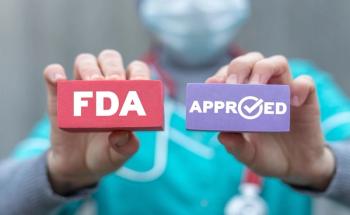
One Dose of HPV Vaccine Effective in Preventing Cervical Cancer Compared With Multiple Doses, Researchers Say
A single-dose human papillomavirus (HPV) vaccination strategy could be effective in less developed countries, where cost is in consideration.
One dose of human papillomavirus (HPV) vaccine can be as effective as 2 to 3 doses in preventing cervical precancer, according to a study of a large national database published in July.
The journal Papillomavirus Research published evidence that found a single dose of HPV vaccine given to women at a young age lowered their chances of having precancerous lesions detected at a future cervical screening by 35%, compared with 41% when the women received all 3 doses.
Lead study author Julia Brotherton, MPH, from the VCS Foundation and an associate professor at the University of Melbourne, said the findings add credibility to the concept of a single-dose HPV vaccine. Brotherton highlighted the importance of ameliorating the tedious HPV protection process, as it would “simplify our ability to protect more people against these cancer-causing viruses.” Prioritizing single-dose vaccination would benefit less privileged countries that experience high rates of cervical cancer due to the higher cost of multiple doses; 84% of new HPV cases last year occurred in these regions.
The study showcased the cervical screening outcomes for a quarter of a million Australian women who were eligible for vaccination under the National Immunization Program. The data was examined by researchers from the VCS Foundation, the Australian Institute of Health and Welfare, and cervical screening managers from the Australian Capital Territory, Northern Territory, Tasmania, Victoria, and Western Australia.
Data covered 250,648 women, including 174,995 who received 3 doses, 18,190 who received 2 doses, 8613 who received 1 dose, and 48,845 who were unvaccinated. Researchers compared the risk of cancerous lesions of the unvaccinated women with those receiving 1, 2, or 3 doses after 7 years. The adjusted hazard ratio (HR) was significantly lower among all 3 groups who had at least 1 dose compared with those who were unvaccinated:
- For women receiving 1 dose, the HR was 0.65 (95% CI, 0.52-0.81)
- For women receiving 2 doses, the HR was 0.61 (95% CI 0.52-0.72)
- For women receiving 3 doses, the HR was 0.51 (95% CI, 0.54-0.65).
These findings showcase a revolutionary possibility to expanding HPV protection, but the authors noted their findings are not conclusive without randomized clinical trials. Factors such as the longevity of the impact that 1 dose has for HPV protection is an issue that persists. Brotherton advocates for young adolescents to continue completing the standard 2-dose vaccination course for best protection until clinical trials are completed.
“The HPV vaccine has proven itself to be both very safe and remarkably effective,” said Brotherton. The
According to the authors, the next step in gaining universal support for a single-dose vaccine would be to increase assessment of the vaccines’ impact in more countries. Many of these countries are beginning the process of gathering data on the screening outcomes of girls who fall into the routine target age of 12 to 13 years old. As many adolescents receive their first HPV vaccination at this age, and a subsequent free follow-up screening at the age of 19, data is found to be most conclusive in studying these groups as opposed to studying young women who were already sexually active prior to vaccination.
With more than 100 types, of which 14 cause cancer, HPV is a significant factor behind cervical cancer’s distinction as the second most common cancer in women living in less developed regions.
Reference
Brotherton JML, Budd A, Rompotis C, et al. Is one dose of human papillomavirus vaccine as effective as three?: A national cohort analysis [published online July 15, 2019]. Papillomavirus Res. doi: 10.1016/j.pvr.2019.100177.
Newsletter
Stay ahead of policy, cost, and value—subscribe to AJMC for expert insights at the intersection of clinical care and health economics.







































